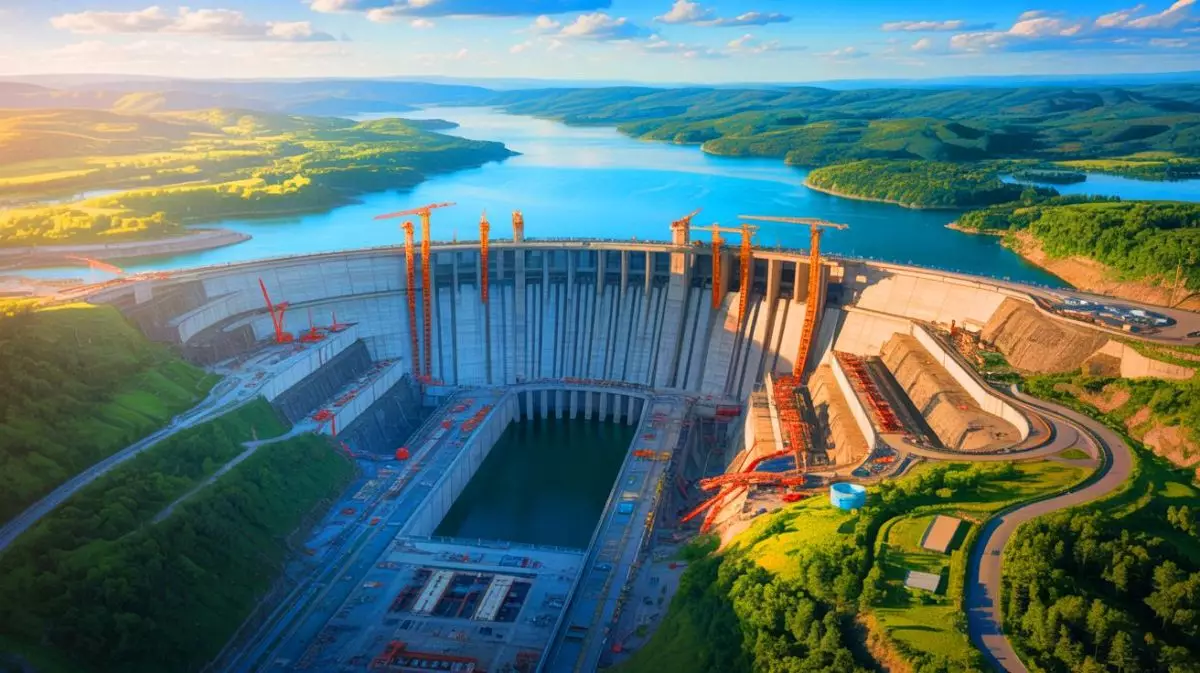| IN A NUTSHELL |
|
The recent announcement of the world’s largest hydroelectric dam has captivated global attention, promising a transformative impact on renewable energy. This ambitious project, set against a backdrop of urgent environmental concerns, signifies a pivotal moment in our quest for sustainable solutions. As this monumental endeavor unfolds, it raises compelling questions about its implications for the future. What opportunities and challenges lie ahead as we embark on this journey into a new era of energy production?
The Colossal Scale of the Project
The undertaking of constructing the world’s largest hydroelectric dam is a landmark achievement in the pursuit of renewable energy. This grand venture is set to generate an enormous amount of electricity, significantly contributing to water resource management while playing a crucial role in combating climate change. With its capacity exceeding that of all existing hydroelectric infrastructures, this dam will redefine engineering prowess. Imagine a towering wall of water hundreds of feet tall, extending for miles across the landscape. Such a construction demands vast quantities of materials, including miles of steel and tons of concrete.
The undertaking of this project has not been without years of preparation. Extensive geological, technical, and environmental studies have been conducted to ensure its feasibility and sustainability. However, the sheer size of the reservoir will result in the inundation of extensive land areas, altering ecosystems and affecting local populations. The challenge of managing these human and environmental impacts is vital for the project’s success, as it will require careful consideration and strategic planning.
An Unprecedented Energy Potential
This dam promises to revolutionize energy access for millions, with an output that could power entire cities and reduce dependence on fossil fuels. Hydroelectric power, as a renewable energy source, emits minimal greenhouse gases, establishing it as a vital player in the fight against climate change. The operation of this infrastructure could stabilize regional electrical grids, previously prone to outages, and contribute to greater energy resilience against economic and climatic fluctuations.
The potential of this dam extends beyond energy production; it will likely create numerous local jobs during its construction and operational phases. However, managing energy production on such a scale requires meticulous planning. Seasonal river flow variations must be anticipated, utilizing advanced technologies to monitor and optimize production in real-time. This strategic use of technology ensures the efficient utilization of available resources, maximizing the dam’s energy output.
Environmental and Social Challenges
Balancing the production of renewable energy with the preservation of ecosystems requires a delicate approach. Engineers and ecologists are collaborating to minimize the impact on local flora and fauna while meeting rising electricity demands. The construction of a dam of this magnitude presents significant environmental challenges, including potential disturbances to aquatic and terrestrial ecosystems. Migratory fish, for instance, may have their routes obstructed, necessitating innovative engineering solutions for safe passage.
Additionally, the creation of the reservoir will flood large tracts of land, leading to the loss of natural habitats and farmland. This raises the need for environmental compensation and restoration measures to mitigate ecological impacts. Addressing these issues demands rigorous and well-conceived environmental management plans. Socially, relocating communities affected by the flooding is a sensitive issue, requiring fair compensation and active participation in decision-making to avoid conflicts. Transparent dialogue with stakeholders is crucial for the project’s success.
Technological Innovations at Play
To successfully realize this massive project, engineers are leveraging cutting-edge technological advancements. Innovative construction techniques are being employed to ensure the dam’s strength and longevity, while minimizing its environmental footprint. Computer simulation models are crucial for effective resource planning and management. Automated control systems optimize water flow management, ensuring both infrastructure safety and energy efficiency. These technologies also enable flood prediction and management, protecting downstream communities from potential disasters.
The integration of energy storage solutions, such as next-generation batteries, could further enhance energy production by smoothing output and addressing peak demands. These innovations pave the way for smarter and more sustainable hydroelectric energy use, reinforcing its role in the global energy landscape. With these advancements, the dam stands as a testament to human ingenuity in the pursuit of a sustainable future.
Geopolitical and Economic Implications
The construction of this colossal dam holds significant geopolitical and economic ramifications. By producing massive amounts of renewable energy, it could reduce dependence on traditional fossil fuel suppliers and alter global power dynamics. Neighboring nations may benefit from the excess energy, fostering regional cooperation and strengthening international ties.
Economically, the dam could stimulate local and national growth through job creation and decreased energy costs for industries. Investments in surrounding infrastructure, such as transportation and communications, could further boost regional development. However, the project’s success hinges on overcoming initial costs and construction timelines, necessitating secure financing and effective risk management. As this monumental endeavor unfolds, it sets a precedent for future projects, contributing to the global shift towards sustainable energy solutions.
The construction of this monumental hydroelectric dam offers both immense opportunities and significant challenges. While its potential benefits in sustainable energy production and economic development are clear, addressing the social and environmental impacts remains critical. The project’s success will depend on a combination of technological innovation, responsible management, and international collaboration. How will this endeavor shape the future of renewable energy in our quest for a more sustainable and equitable world?
Did you like it? 4.4/5 (26)









Wow, 10 times bigger than Paris? That’s massive! How long did it take to plan this? 🌍
Is it just me, or does this sound like the plot of a sci-fi movie? 🤔
I hope they have a solid plan for relocating the affected communities. That’s always a tough challenge.
Will this dam have any impact on global energy prices?
As much as I love renewable energy, I can’t help but worry about the environmental impact. 🌳
How do they plan to manage the seasonal river flow variations? Sounds complex!
This is an engineering marvel! Hats off to the team behind it. 👷♂️
Why do we always have to build things so big? Sometimes less is more, right?
Hope this doesn’t become another political tool. 🙄